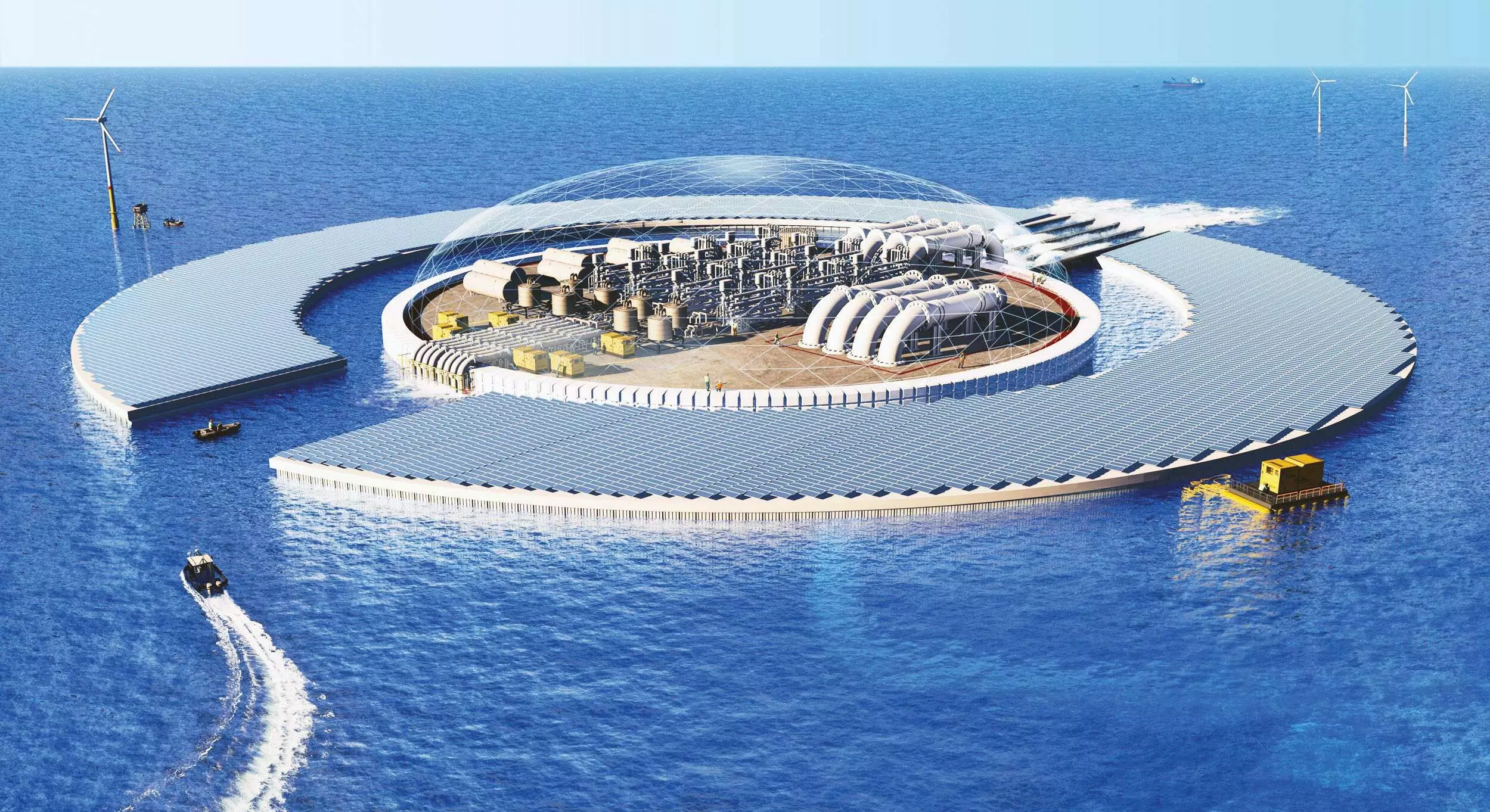Tapping the Blue Giants
In the race against climate change, the oceans can emerge not just as victims but as vital solutions—with Direct Ocean Capture offering a game-changing, efficient, and scalable pathway for carbon removal

In one of the earlier articles in the series, I had discussed the importance of forests as a natural sink for absorbing carbon dioxide. Just like forests, oceans are another large sinks for carbon dioxide absorption. Quoting the World Resources Institute in an earlier article, we saw that oceans absorb 30 per cent of all carbon dioxide in the air and 90 per cent of excess heat: in all, the oceans hold 42 times more carbon than the atmosphere. This has put the oceans under extreme stress leading to excess warming, acidification and loss in oxygen, thereby endangering the marine ecosystems. We have already discussed the importance of Blue Carbon (or Mangroves) restoration and rejuvenating oceans by various means. We will discuss more such ways such as Direct Ocean Capture and ocean-based carbon sinking.
Direct Ocean Capture
As noted above, the oceans hold 42 times more carbon than the air. In addition, ocean water can hold 150 times more carbon dioxide per unit volume as compared to the air. This leads us to Direct Ocean Capture (DOC), which is a way to capture carbon dioxide directly from the ocean. DOC is similar to Direct Air Capture (DAC), which we discussed in an article earlier, where carbon dioxide was captured directly from the air and stored underground in the form of carbonates for thousands of years. The fact that ocean water contains far more carbon than the air, makes DOC a more efficient and less costly way of Carbon Dioxide Removal (CDR).
The idea behind DOC is rather simple: extract carbon dioxide from ocean water, which enables it to store more carbon dioxide. There are two main ways to extract carbon dioxide: 1) an electrochemical ph swing process, which first creates an alkaline solution by generating hydroxide ions (OH- ions), which react with and capture carbon dioxide as carbonate or bicarbonate ions and then using electricity to create an acidic environment, whereby the captured carbon dioxide is released. The stream of ocean water, which is freed of carbon dioxide can be released into the ocean again and the carbon dioxide removed can either be stored underground or used in the industry to make various products. 2) The other way is simply enhancing the alkalinity of the oceans by adding alkaline materials. This process is simpler but requires the constant adding of chemicals to the ocean and does not involve a cyclic process like that in the electrochemical swing process.
As compared to DAC, which has attracted a lot of investment, with many plants coming up all over the world, DOC is still developing. Four companies, which are involved in CDR through Direct Ocean Capture are discussed below:
- Brineworks: This is a company based out of Amsterdam that has developed a technology that uses electrolysis to extract carbon dioxide from sea water and also gives hydrogen as a byproduct. The company plans to use green hydrogen as a fuel in aviation. According to the company, their cost of CDR is about USD 100 per ton, which is far lower than the similar cost of CDR by Direct Air Capture.
- Captura: This is a company based in Pasadena, California and uses technology developed by the California Institute of Technology to capture carbon dioxide from ocean water using electrolysis. This is similar to the technology used by Brineworks. Captura began with a pilot project in the sea off the Port of Los Angeles and plans to build a large plant in Hawaii, USA.
- EbbCarbon: This is a company based in Houston, Texas and uses the familiar technology of electrolysis in ocean water. It works with aquaculture farms, desalination plants, coastal industry plants and ocean research labs.
- SeaO2: This is a company born in Delft University in the Netherlands and uses the same technology of electrolysis and membranes to extract carbon dioxide from sea water. It plans to build its first plant in the North Sea and plans to scale up to capture One Gigaton of carbon dioxide by 2045
Conclusion
Direct Ocean Capture (DOC) is a promising technology that uses the vast carbon absorbing capacity of the oceans to extract carbon dioxide from its waters through the simple process of electrolysis. While DOC is new, it has the potential to surpass its cousin Direct Air Capture because of its simplicity and lower costs. Being in the class of ‘negative emissions’ and given that the IPCC and the UN have ruled that mitigation alone won’t be sufficient to meet our global warming target of 1.5/2 degrees Celsius, DOC is here to stay.
The writer is Additional Chief Secretary, Department of Cooperation, Government of West Bengal.
Views expressed are personal



